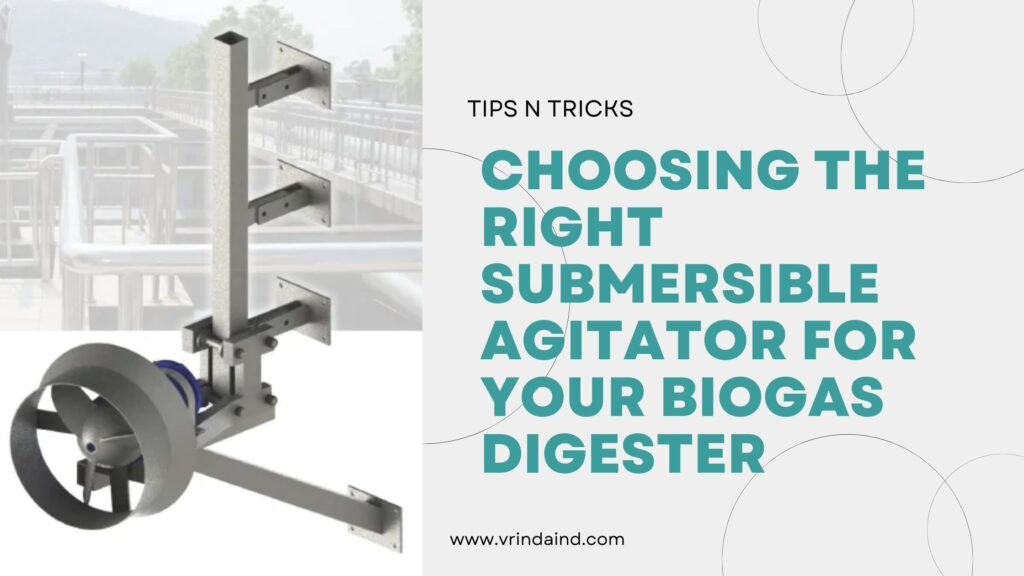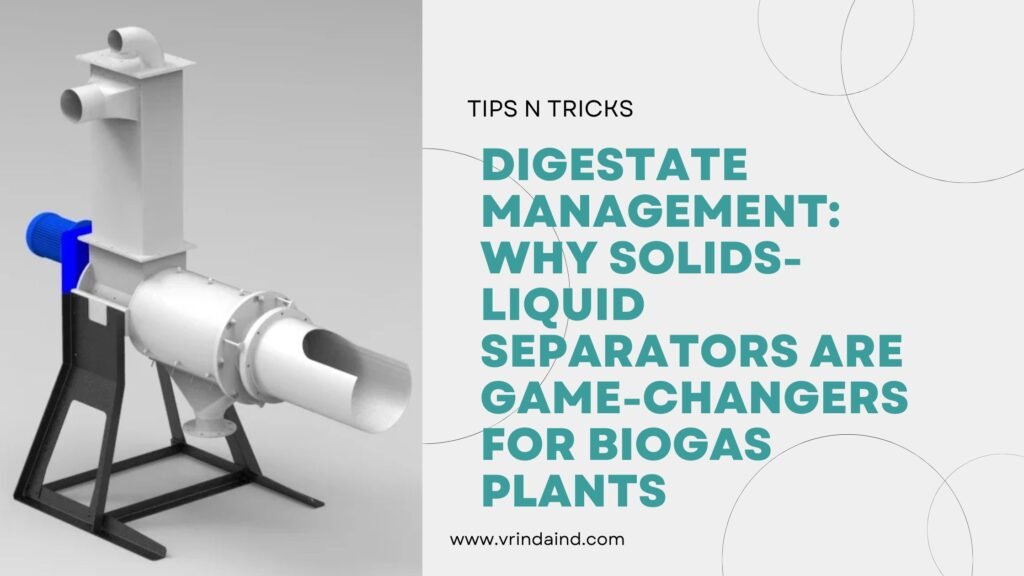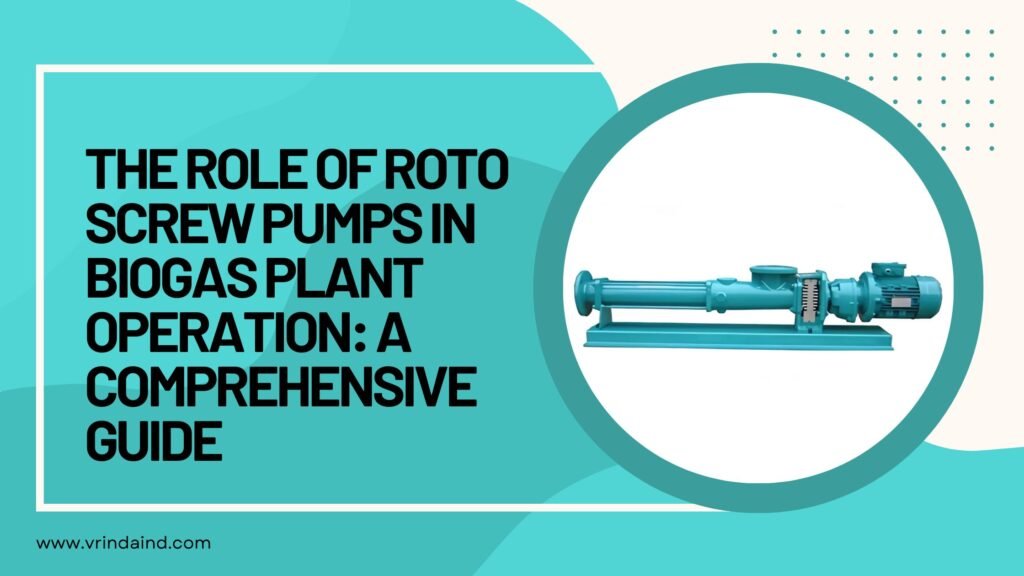In a world increasingly focused on sustainability, finding innovative ways to manage waste and generate clean energy is paramount. One of the most powerful solutions available today is the biogas plant. These remarkable facilities transform organic waste – from agricultural residues to food scraps – into valuable resources: renewable energy (biogas) and nutrient-rich organic fertilizer (digestate).
At Vrinda Industries, as a leading biogas plant equipment manufacturer, we believe in empowering a greener future. This guide will walk you through the fascinating world of biogas plants, explaining what they are, how they work, and why they’re a cornerstone of modern organic waste management.
What is a Biogas Plant? A Simple Explanation
Simply put, a biogas plant is an engineered system designed to process organic materials in the absence of oxygen. This process is called anaerobic digestion. Inside the plant, tiny microorganisms break down the waste, producing a gas mixture rich in methane (biogas) and a nutrient-dense liquid/solid byproduct (digestate). Think of it as mimicking a cow’s stomach on a larger, controlled scale, turning “waste” into “worth.”
How Does a Biogas Plant Work? The Journey from Waste to Energy
The process within a biogas plant might seem complex, but it follows a clear, natural path:
Waste Collection & Pre-treatment: Organic materials (like manure, crop residues, food waste, industrial organic waste) are collected and often pre-treated. This might involve grinding or mixing to create a uniform “slurry.”
Feeding the Digester: This prepared slurry is fed into a sealed, oxygen-free tank called an anaerobic digester. This is where the magic happens!
Anaerobic Digestion: Inside the digester, various types of bacteria get to work. Without oxygen, they break down the complex organic matter into simpler compounds. This biological process releases biogas (primarily methane and carbon dioxide). Efficient mixing within the digester (often done by specialized submersible agitators) is crucial here to ensure all material is exposed to the bacteria and temperatures are uniform.
Biogas Collection: The biogas produced floats to the top of the digester and is collected in a sealed system. It’s then typically cleaned to remove impurities.
Energy Generation: The cleaned biogas can be directly used for heating, cooking, or, most commonly, fed into a generator to produce electricity and heat (known as Combined Heat and Power or CHP).
Digestate Management: The material remaining in the digester after gas production is called digestate. This nutrient-rich byproduct is then often separated into liquid and solid fractions using solids-liquid separators. The liquid can be used as a natural fertilizer, and the solids as a soil conditioner or bedding material. Precise pumps (like screw feeder pumps or roto screw pumps) are vital for moving the thick, viscous digestate throughout this process.
Why Biogas? The Immense Benefits of Sustainable Waste Management
Investing in a biogas plant offers a multitude of advantages for businesses, communities, and the environment:
-
Renewable Energy Production: Generates clean, consistent energy (electricity, heat, or even vehicle fuel) from waste, reducing reliance on fossil fuels.
-
Effective Organic Waste Management: Provides a sustainable solution for agricultural waste, food waste, and industrial organic residues, diverting them from landfills.
-
Reduced Greenhouse Gas Emissions: Captures methane (a potent greenhouse gas) that would otherwise escape into the atmosphere from decomposing waste.
-
Production of Organic Fertilizer: The digestate is an excellent, nutrient-rich biofertilizer, reducing the need for synthetic chemical fertilizers and improving soil health.
-
Odor Reduction: Anaerobic digestion significantly reduces unpleasant odors associated with decomposing organic waste.
-
Cost Savings: Can lower energy bills, reduce waste disposal costs, and generate revenue from energy sales or fertilizer.
-
Rural Development: Provides decentralized energy solutions and economic opportunities in agricultural areas.
Key Equipment for a Successful Biogas Plant
A well-functioning biogas plant relies on robust and efficient equipment. As a dedicated biogas plant equipment manufacturer, Vrinda Industries specializes in core components that ensure optimal performance:
-
Submersible Agitators & Mixers: Essential for maintaining homogeneity and preventing sedimentation inside digesters, maximizing gas yield.
-
High Flow Agitators: Perfect for ensuring wide-area mixing and circulation in very large digestion tanks or lagoons.
-
Screw Feeder Pumps: Ideal for the precise and consistent transfer of viscous, high-solids feedstock into the digester.
-
Solids-Liquid Separators for Digestate: Crucial for efficiently separating digestate into valuable liquid and solid fractions for easier handling and beneficial reuse.
-
Roto Screw Pumps (Progressive Cavity Pumps): Versatile for pumping abrasive, shear-sensitive, or highly viscous media throughout the plant process.
Vrinda Industries: Your Partner in Sustainable Biogas Technology
At Vrinda Industries, we don’t just supply equipment; we manufacture high-quality, durable biogas plant equipment designed for long-term reliability and peak performance. As an experienced international biogas equipment exporter, we are committed to providing tailored solutions that meet the specific needs of your organic waste management and renewable energy projects anywhere in the world.
From initial design considerations to the precise manufacturing of critical components, we are your trusted partner in unlocking the full potential of organic waste.

Contact Vrinda Industries today to discuss your project and learn how our expertise can benefit you!




